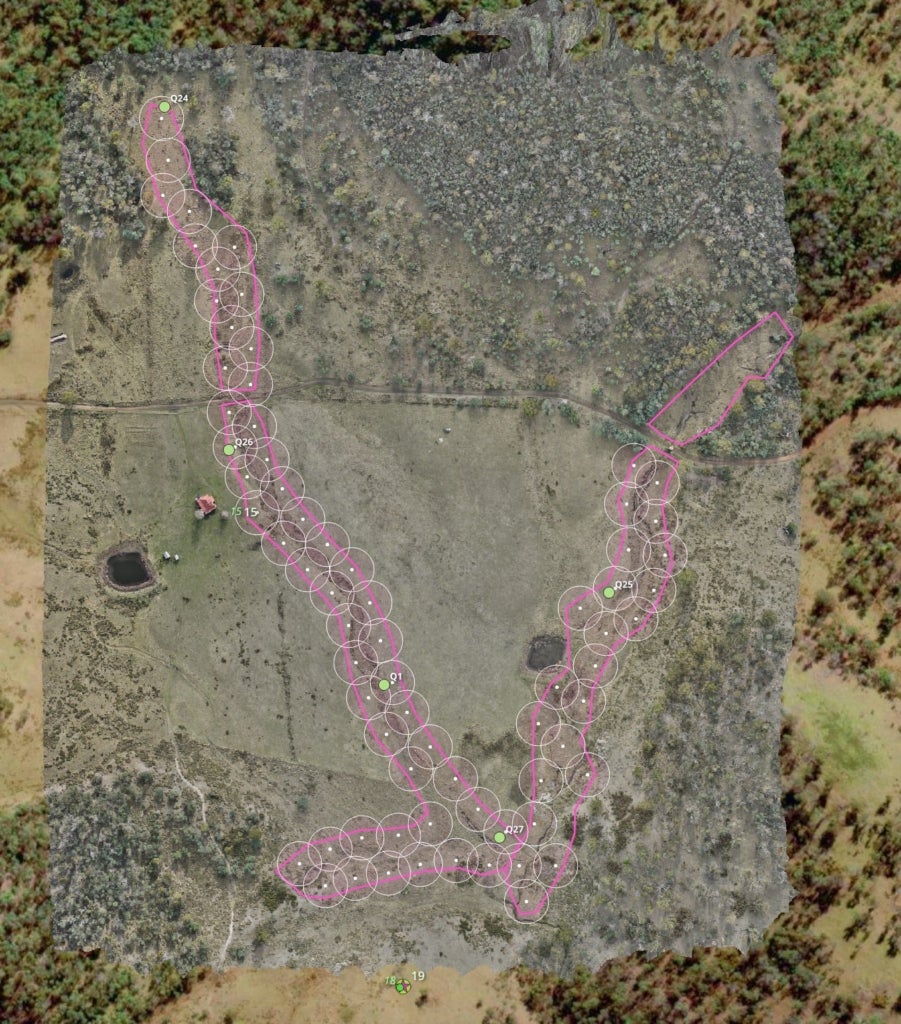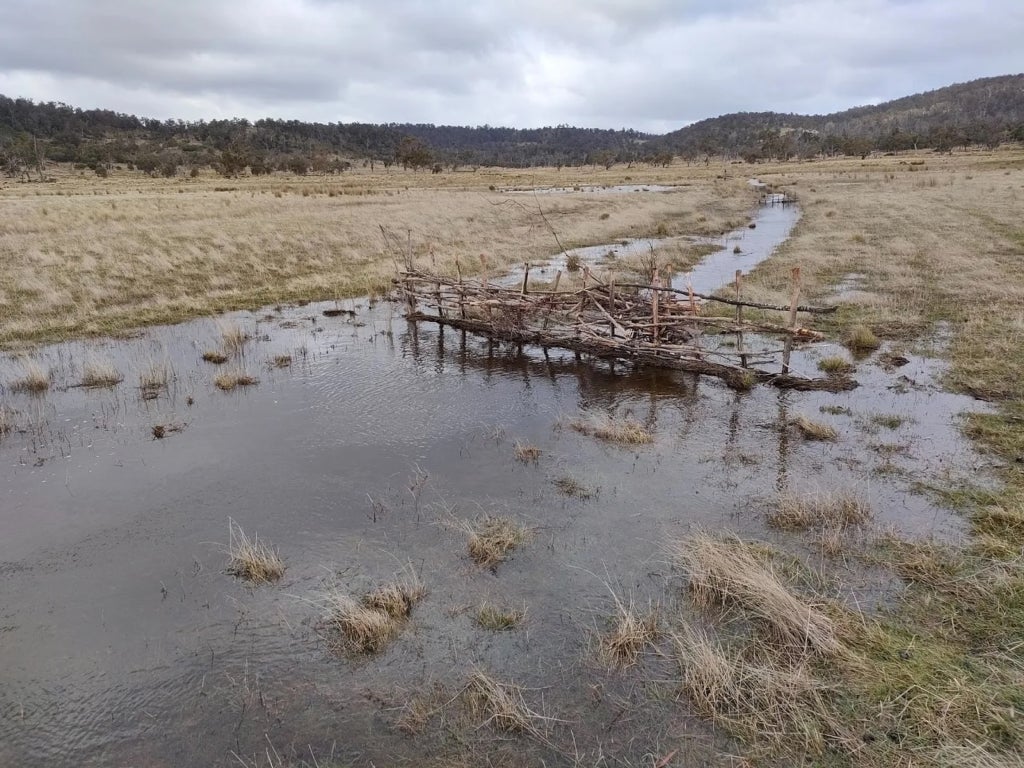The Quoin: A Living Laboratory of Solutions for Nature
By Cecilia Riebl, ILCN Regional Representative (Australasia), and acknowledging the contributions from the Quoin team and the Australian Land Conservation Alliance team.
“To solve a problem, you must deeply understand it. But the biodiversity crisis is no ordinary problem. It’s the most complex problem humanity has ever faced. It’s simultaneously local and global, visible and invisible, practical and philosophical. The only way to understand a problem of such complexity is to roll up your sleeves and learn by doing—which is what we’re doing at our living laboratory The Quoin,”
– Lisa Miller, Wedgetail Founder and CEO
A little over a decade ago, three Australian entrepreneurs cofounded the design platform Canva. Within six years of its launch, Canva became a “unicorn startup,” meaning it was valued at over one billion dollars.
Today, Canva co-founder Cameron Adams and his wife, zoologist-turned-tech-entrepreneur Lisa Miller, are focused on a new challenge: biodiversity loss, nature conservation, and climate change.
Rather than spending their fortune on space exploration or colonizing Mars, the couple pledged most of it to the Wedgetail Foundation, an organization Lisa founded in 2022, that uses blended finance models to support the businesses and projects conserving and restoring biodiversity for the benefit of all species. It does this partly by experimenting on the ground in its demonstration landscape called The Quoin.

The Quoin: A demonstration property for nature innovation
Spanning 5,000-hectares (about 12,355 acres) in Tasmania’s Midlands, The Quoin is home to some of the most threatened ecosystems in the world, including temperate grasslands that have been heavily cleared for grazing and cropping over the past 150 years.
The Quoin is a demonstration property, meaning it serves as a place to trial and de-risk technology and business models that support the viability and profitability of conservation work. Here, the Wedgetail team is learning what it takes to restore ecosystems, what measuring and monitoring is needed, and how conservation and commercial activities can be successfully combined.
“Once Wedgetail has done the expensive work of figuring out the best business models, others can follow,” wrote ABC Journalist Ashleigh Barraclough in January.
In March of this year, Lisa and her team hosted the Australian Land Conservation Alliance (ALCA) for a tour of The Quoin.
ALCA is the peak body for private land conservation in Australia, and advocates for the critical role that privately owned land can play in solving the biodiversity crisis—especially given that around 60 percent of Australia is privately owned or managed. Private finance is also an essential part of scaling these conservation efforts.
“Private land conservation protects critical ecosystems, reconnects fragmented landscapes to allow wildlife movement and climate resilience, and enables fast, locally led action that’s often more agile than government programs,” said ALCA CEO, Jody Gunn. “The work at The Quoin is a superb example of the innovation and contribution of private land conservation.”
Science in action
“There are so many great organizations undertaking biodiversity research, and so much good science out there already. Our approach is to apply this science and share our learnings widely,” Lisa explains. A perfect example of science in action is the vegetation islets experiment underway at The Quoin’s Honeysuckle Flat. Rather than planting trees across the entire 54-hectare (about 133-acre) restoration zone, the team is creating “vegetation islands,” small 2×2-meter caged patches of habitat scattered strategically across the landscape.

This method draws on the work of Alex Lechner and Edward Charles Lefroy in 2014, as cited by Neil Davidson et al. in 2021, which emphasizes the importance of creating smaller, well-connected habitat patches to support fauna movement.
These islets are designed to allow native animals to move safely through the landscape short term, and to kickstart a natural regeneration cycle to reconnect fragmented landscapes long term.
The approach is also cost effective. Vegetation islets come in at less than half the cost of fully fencing a restoration area and have the added benefit of decreasing the risk of wombats or deer infiltrating the sites.
Currently, the approach is an experiment. If it goes well, it will be adapted to the property’s other restoration areas and will produce learnings relevant to ecological restoration across Australia’s vibrant, woody grassland ecosystems.
Mimicking nature
To enable year-round grazing in Stocker’s Bottom, a grassland ecosystem prone to flooding, The Quoin’s previous landholders installed extensive drainage channels leading into a dam. These landscape modifications had unintended consequences, including exacerbating dehydration in dry times, and caused the channels to backfill the dam with soil, reducing its depth to just 1.5 meters.
To reverse these effects, the team is testing a deceptively simple “leaky weirs” solution to bring water back into the landscape.
At The Quoin, rehabilitation approaches aim to mimic natural processes and responses of nature, which are inherently complex and non-linear. “Wherever possible, we try to think outside the box and conduct micro-experiments to test theories, practices, and technologies,” Lisa says.
Built from natural materials, leaky weirs are designed to slow and filter water flow, giving it a chance to disperse across the landscape and soak back into the soil. These structures also help limit manure runoff into waterways, provide perches for birds, and create habitat and shelter for insects and small mammals.
This creative, almost playful approach to problem solving is embraced by the team at The Quoin. As property manager Andrew Wenzel notes, sometimes the best solutions are not high-tech innovations, but time-tested traditional methods adapted to modern challenges.
“Leaky weirs help us to learn quickly,” Wenzel said. “Trees take 5-10 years to grow enough to really represent a strong opportunity for diversity, but we can immediately see what birds are nesting on our leaky weirs, what animals come to investigate, and what plants take root in the crevices.”
Wenzel also noted that leaky weirs create opportunities on the land. “When water is racing down a perfectly cut channel, it’s a very simple energy system. But natural systems aren’t linear and simple. Natural systems are chaotic—and chaos is opportunity,” he said. “Leaky weirs bring some of this chaos back to the landscape, enabling species to return to and interact with the area in unexpected ways.”

Looking ahead
While nature restoration can feel slow, the focused work happening at The Quoin is charged with a sense of energy and potential—potential to scale, respond, and offer investable solutions to a rapidly growing biodiversity market.
“The biodiversity crisis won’t be solved by one organization or one government,” said Lisa. “It will take all of us, working together, in the same direction, sharing our learnings and unlocking change at scale.”
